Apr 13, 2025
Apr 13, 2025
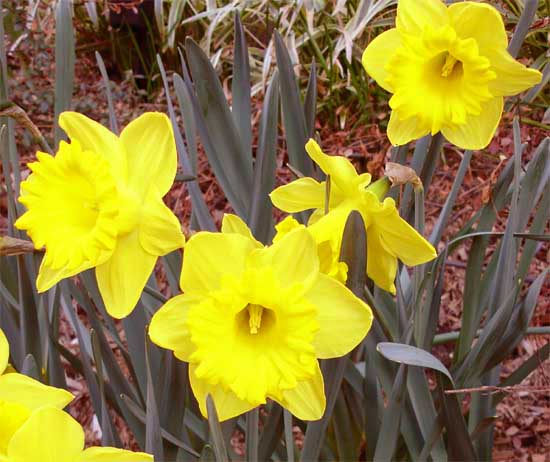
Daffodils
Among the first to bloom, the Daffodils announce the arrival of spring. Daffodils are a group of large flowered members of the genus Narcissus. Most daffodils are yellow. Daffodils are perennial flowers, grown from bulbs. All daffodils have a central trumpet surrounded by a ring of petals. The traditional daffodil is entirely golden yellow, but the trumpet is often a contrasting color.
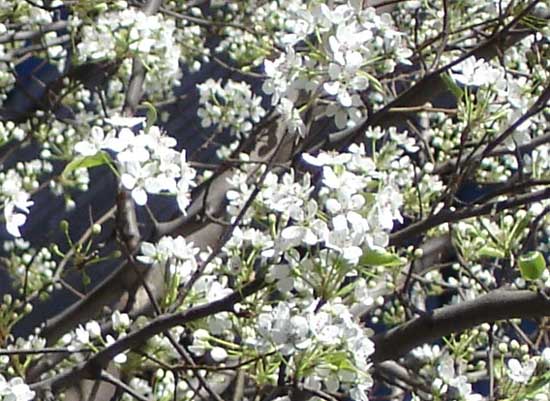 Callery Pear
Callery Pear
Among the trees Pear and Magnolia (the Pink variety) are the first bloomers announcing the arrival of Spring. The Callery Pear (Pyrus calleryana) is widely planted throughout North America as an ornamental tree and can be seen on almost every street and avenue of the New York City. It is commonly planted for its decorative value, but its hard little fruits are taken by birds. The leaves are oval, 4-7 cm long, glossy dark green above, slightly paler below. The flowers are produced in early spring before the leaves expand fully, and are white, with five petals, and about 2-3 cm diameter.
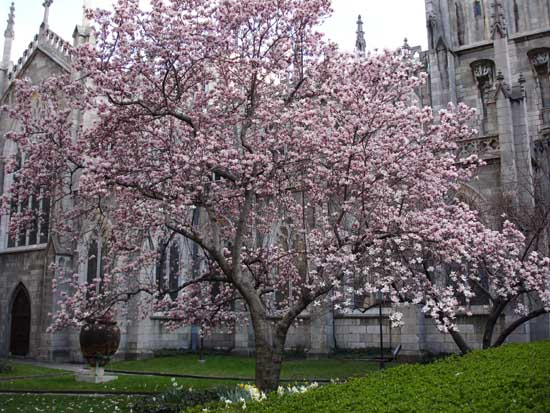 Magnolia
Magnolia
Among the trees Pear and Magnolia (the Pink variety) are the first bloomers announcing the arrival of Spring. Magnolias in full bloom, especially in a street setting where there are few other plants or trees around, seem to triumph amongst most of our other spring flowering trees. The size and form of magnolia flowers, especially Magnolia x soulangeana (Alexander Magnolia), is just impressive. This tree is also noticeable extensively in the New York City.
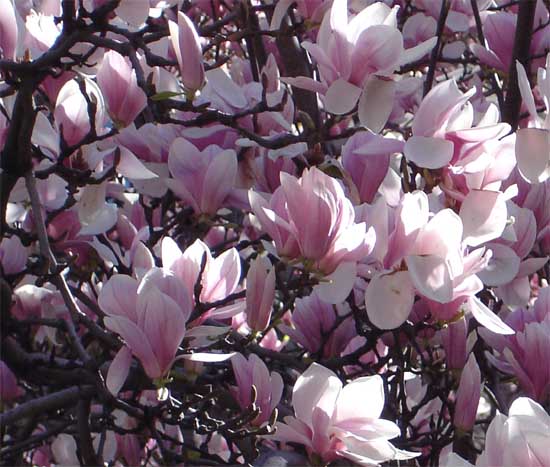
A close up of the Magnolia (Magnolia x soulangeana) in full bloom.
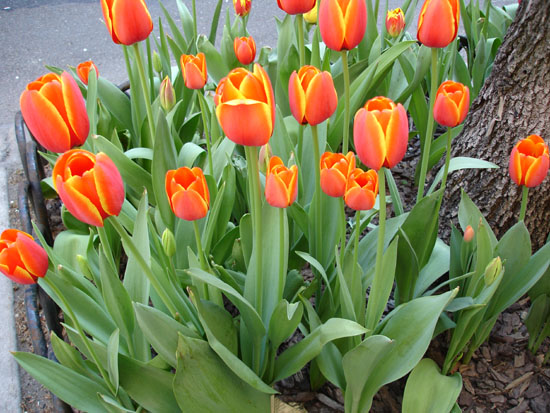 Tulips
Tulips
As spring starts to settle down, Tulips are among the first set of flowers to brought out from their containers and set in the gardens, around the trees. Tulips are one of the easiest flowers to grow successfully in the garden. Their bulbs are planted in the fall these beautiful flowers bloom in the spring! Tulips are classified as a perennial flower yet this is not always the case. Tulips behave as perennials in conditions that match the cold winters and hot, dry summers of their native region i.e. the climate of Eastern Turkey and the foothills of the Himalayas.
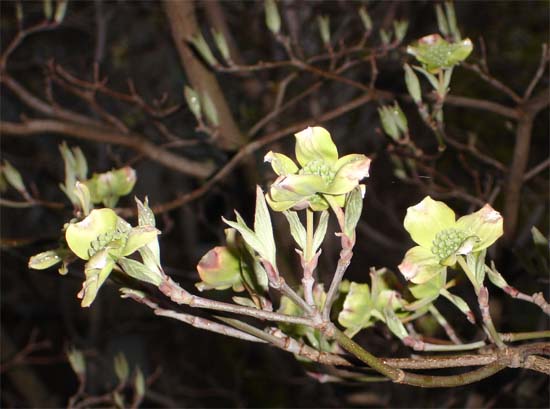 Dogwood
Dogwood
This Dogwood tree is in the front yard of my house. Viewed even from a distance of even 10 feet the tree looks dry and no leaves have sprouted yet. However, a very close look reveals the formation of the buds.
This shot is taken from a distance of only 3 feet to capture the buds and has been cropped to reveal the best possible close-up.
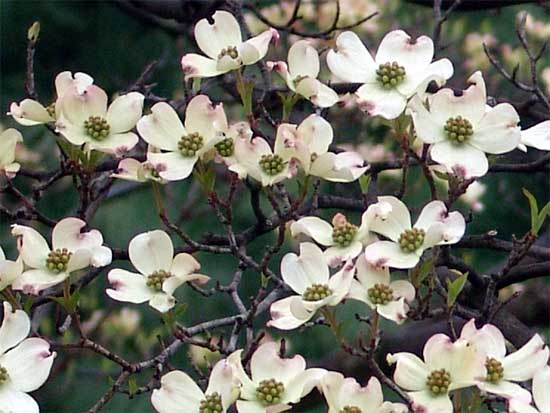 It was raining and the weather is becoming a bit chilly. I get up to close the window.
It was raining and the weather is becoming a bit chilly. I get up to close the window.
The Dogwood tree is getting loaded with its bloomers. These buds seem to have grown almost twice during the last 30 hours.
Dogwood Tree in full bloom.
The flowers will now remain blooming for another 2 to 3 weeks followed by large lush green leaves that have started to sprout.
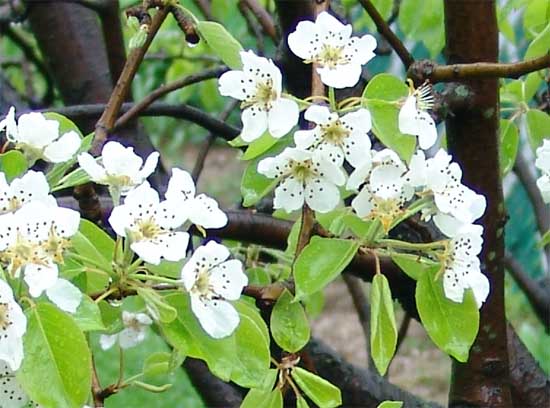 Pear
Pear
The Pear tree seems to rejoice in its renewed life in Spring reverberating with its sap that will eventually be cherished by man in the form of the juicy and sweet Pear fruit. Pear is a small yet graceful tree, sometimes a mere shrub, more often twenty feet high than forty. The branches are generally spinous, and they spring from the main stem in an ascending manner and then curving outwards. The leaves are scattered alternately along the young shoots, but crowded together in bunches. A close up of the flowers of the Pear tree that have started to bloom. The leaves of the Pear are generally on a longer and more slender stalk and are more pendulous.
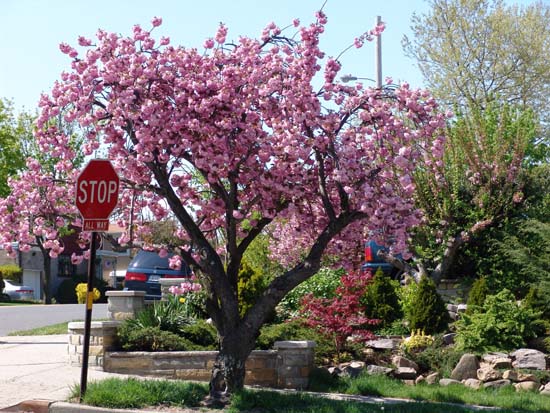 Cherry Blossom
Cherry Blossom
The famous tree signals the coming of Spring with an explosion of life and color. Among the many varieties of Cherry Blossom, the Kanzan is one of the most numerous. One Kanzan blossom consists of as many as 30-50 pink petals. The fresh leaves are coppery brown. These bloomers are best viewed from mid April to early May. Cherry Blossom Festival is very famous in Washington DC that is celebrated every year around the Jefferson Memorial.
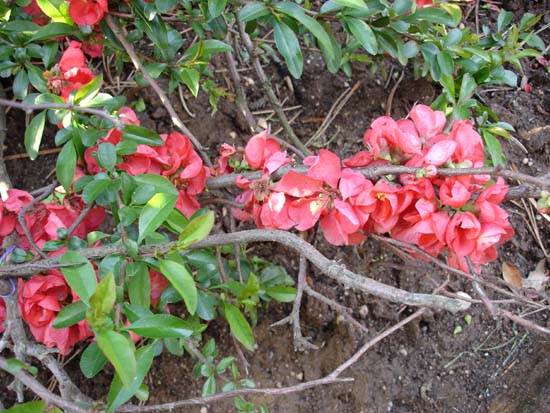 Chinese Plum
Chinese Plum
A tiny little shrub but with some very nice flowers and rich leaf foliage. The shrub starts blooming from end April and goes on blooming till early June 2005. These flowers also have their own distinct fragrance.
24-Apr-2005
More by : Rajender Krishan